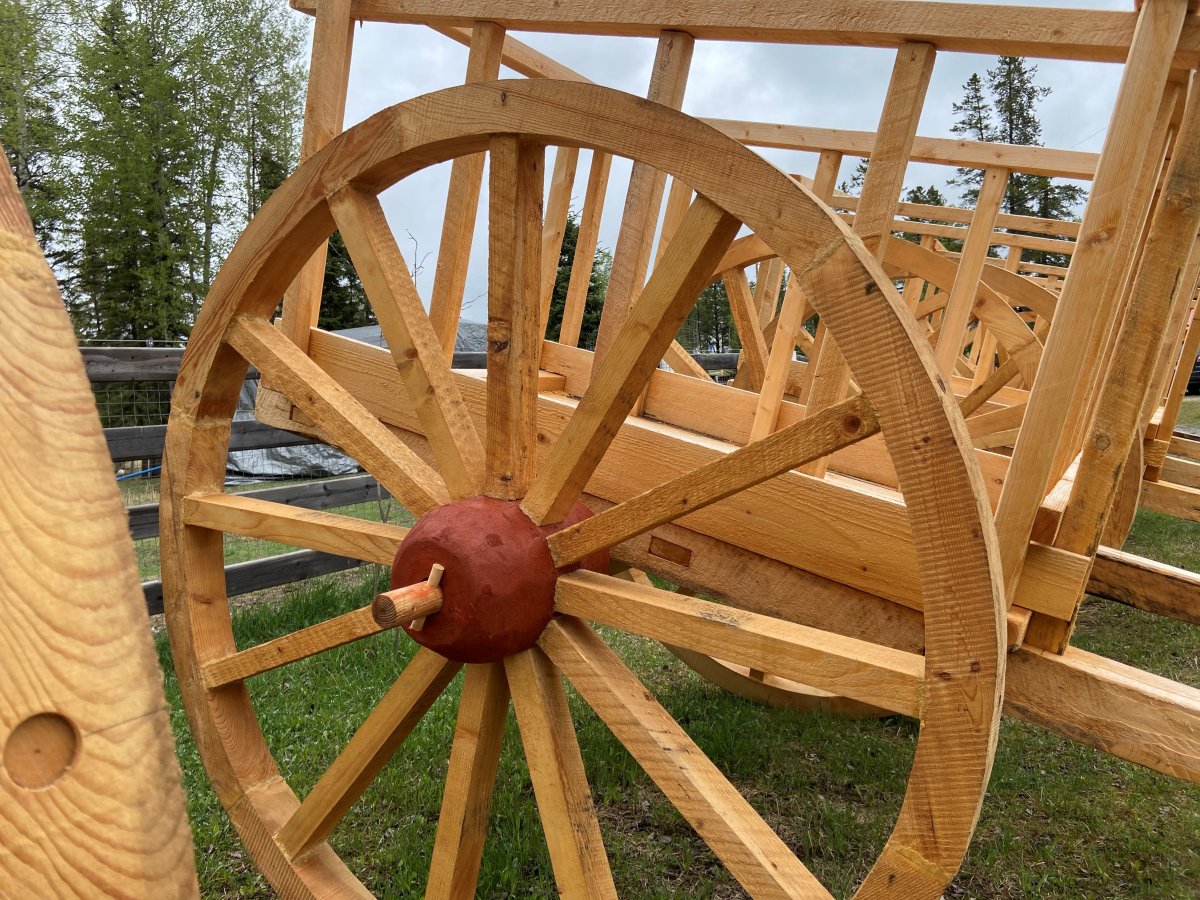It’s an iconic symbol from the mid- to late-1800s. Red river carts are Métis innovation, characteristic of their culture and craftsmanship.

They were critical tools of their time, and why George Moritz has such a passion to resurrect the rich history. He spent months on his property in Rocky Mountain House recreating 10 red river carts.
“It’s a lost art. As time goes on, technology only goes so far and you have to go back to your roots,” Moritz said.
It’s the heritage of his Métis wife, Gladys Bigelow, that inspired him to find a way to build them.
“He said to me: ‘I would love to build Métis carts,’ and I said: ‘You would, hey? Well, there’s a course being offered at the historic park.'” Bigelow said. “There was seven of them who enrolled, all the others dropped off and George continued. The enthusiasm was there.”
“I took a crash course. It’s like anything else, blacksmithing or mechanics, you take a course and have to continue with the work otherwise you will lose it or forget,” Moritz said.
Bigelow watched her husband with pride as he spent the pandemic building the entirely wooden carts.
“It’s my ancestry and it’s a fulfillment for him,” Bigelow said.
Bernie Ouellette is with the Métis Nation local 845 in Rocky Mountain House. He hopes the carts can be put on display at museums or historical sites across the country.
“We didn’t want to see it die away,” Ouellette said.
“In the early days, metal was a commodity. You didn’t come across it out on Prairies. If you broke a wheel and you needed to repair it, you’re surrounded by trees,” Ouellette said. “They are capable of carrying 100 pounds or 45 kilograms.”
Ouellette said Calgary’s TC Energy helped fund a program that allows Moritz to teach the younger generation about what he’s learned.
“We needed someone to teach the youngsters to pass it on,” Ouellette said.
Jake Bailey is learning from Moritz.
“We all read history books and most of this wasn’t in the history books,” Bailey said. “It’s cool to learn about your family and your heritage and stuff you wouldn’t even know about.”
The construction is complex. The old intricate drawings were preserved over the years by Parks Canada and became the blueprint for Moritz’s work. Greg Joyce is the manager for the Rocky Mountain House National Historic Site. He said it was important to offer the course to interested artisans.
“Over the years, we had lots of local interest and we thought it was a good opportunity to open it up for participants to learn the skills and we would share that knowledge,” Joyce said.
Moritz said the craft is renewing appreciation for the legacy of the entrepreneurial spirit that endures.
“If you don’t know your past, you don’t know your future.”











Comments